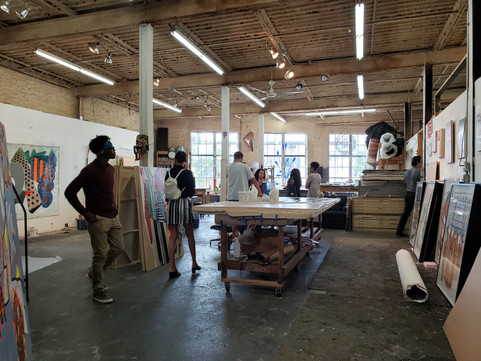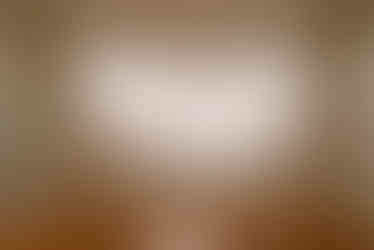By Lindsey Roark, Arts Intern in Collections

My name is Lindsey Roark, and I am a junior at the University of Memphis. I’m currently working towards a bachelor degree in Business Management with an Art minor. Thanks to the Studio Institute’s Arts Intern program, I was given the opportunity to intern with the Metal Museum in their Curatorial Department. As this is the first year for Memphis to host the Arts Intern program, here is a quick overview to aid your understanding of my internship.
The Arts Intern program spans over nine weeks. I worked from 9:30 am to 5:00 pm Monday through Thursday at the Metal Museum for a total of twenty-eight hours a week. Fridays were what I call field trip days. The eight interns from other organizations and I met up with Amy Foote, the Arts Intern Memphis Program Coordinator, at different museums or art organizations around Memphis. Once there, we took the opportunity to see the facility, learn about its history, and how the organization is operated. A few places we visited were the Memphis Brooks Museum of Art, an encyclopedic art museum; Marshall Arts, a small art gallery/artist residency; and the Stax Museum of American Soul Music, a music museum.
My project for the Museum was to identify, catalog, and store the 40 objects of the Kenneth Lynch Tool Collection, part of the Metal Museum's Permanent Collection. The pieces were a gift from Kenneth Lynch and Sons and were donated to the museum back in 1987-89. Kenneth Lynch (1906 - 1989) had collected an assortment of tools over his metalsmithing career, and the ones donated to the Museum were only a small portion of his tool collection, which consisted of 500 tons of tools by the late 1980s. Lynch began donating and auctioning off this collection in his old age. To learn more about Kenneth Lynch and the tool collection, read my blog post here.
In June, after receiving a full tour of the Metal Museum’s grounds, seeing foundry and smithy demonstrations, and meeting the staff, I began tackling the research phase of my project. Part of the collection had been recorded and conditioned back in 1989 and 1997, which aided the start of my research greatly. I began by identifying the objects and giving each of them a name. A few pieces were clearly axes or hammerheads, but my goal was to provide specific names such as rising hammerhead or hewing ax. There were a few objects harder to identify, such as the recingle. Most of the first two weeks, I went not knowing what to call the piece. On one of my trips to the library, I came across a french book, Glossaire Du Collectionneur D'outils, and discovered the recingle. The recingle was challenging to research due to most of the writing that talked about it was in french, but thankfully, we have Google translate. Once I felt I had enough information about the objects, Kenneth Lynch, and his company, I was prepared to move on to conditioning the objects.
Week three of my internship was spent helping with changing out a temporary exhibition. The Metal Museum has a series called Tributaries, where they support three to four “underrepresented and under-recognized metal artists with solo exhibitions”(1) each year. I worked with the curatorial team, Nan Cook, the Exhibitions Manager; my supervisor Brooke Garcia, the Collections Manager & Registrar; and Kevin Burge, the Metal Museum’s Preparator and Repairs Specialist, to take down the exhibition Tributaries: Jill Baker Gower | Reflection show and install Tributaries: Monica Coyne in its place. We began by taking down Gower’s work and packing the pieces for shipment. At the Museum, it's customary to repackage an artist's work in the same way they shipped it to the Museum. We used photos of the artwork being unpacked to put them back the same way, similar to a puzzle. Once Gover’s work was packed away for shipment, we moved on to preparing the space for Coyne’s work. We patched, sanded, and repainted any holes in the walls. When the paint had dried, we brought up vitrines and pedestals for the new exhibit, that were cleaned and repainted as necessary. Once the room was ready, we started installing Coyne’s work. Lastly, we did any minor clean-up to prepare the exhibition for the Opening Reception. On July 14th, I got to meet and speak with Monica Coyne at her artist talk, bringing the process to a full circle. This was an opportunity I am appreciative of since it allowed me to get hands-on experience with handling artwork along with preparing pedestals and walls for an exhibition.
In weeks four through six of my internship, I did condition reports for all 40 pieces in the Kenneth Lynch Tool Collection. A condition report is used to track an object's health. The report requires the name of the object, the collection title, the donor, the artist, the catalog number, the date, the dimensions, the material, the current location, and a brief description. Once that was filled in, the next step was to describe the physical condition of each object. I had to remark on each touchmarks, corrosion, scratches, or gouges that were on the piece. The condition report is a necessary step in cataloging a permanent collection object. It allows museums to track the condition of an artwork over time; making it easier to notice if the deterioration rate changes on a piece and to see if the object needs to be sent to a conservator. When I was conditioning the objects, I saw that a few of our pieces were missing things that an old condition report had reported present. An example of this would be the 2-prong agricultural fork. It was indicated as having an oval touchmark that showed E. LEBORGNE with a curved sword located in between the prongs' base. The touchmark has deteriorated and was the only way to identify the company that produced the object. Without the old condition report, I wouldn't have known any of this information.
Another crucial step is to place semi-permanent accession numbers on the objects. This allows for easier tracking of objects in the collection, noticing if a piece has gone missing, or is out on a loan. Twenty-three of the pieces had been cataloged back in 1997 and assigned accession numbers, but sixteen hadn’t. This allowed me to learn how to mark and assign accession numbers to objects in the museum. To decide where to mark the objects, I had to take in consideration how the piece might be displayed and place the mark somewhere easy to hide. At the same time, I needed to avoid spots that were severely rusted or prone to rust/corrosion. It’s a poor decision to place an accession number on damaged areas since it prevents that section from being treated unless the number is removed. Additionally, if an area is highly rusted the accession number may flake off with the metal. This could lead to confusion down the road since the object wouldn’t be identifiable.
Week seven through nine, I spent finalizing the cataloging spreadsheets, writing blog posts, and packing the objects away. Since a few of the objects are oddly shaped, Brooke thought it would be best if we made custom boxes. Brooke and I transported the large, odd-shaped objects down into collections storage. We then organized objects together based on shape, size, and type, creating seven groups. Kevin then measured the objects and created boxes to fit the grouped pieces. He created boxes, lids, and removable boards for each of the seven groups. Next, I arranged the pieces on the boards, punched holes, and pulled string through the board and a sheet of foam, which cushions the objects in storage. I then wrapped the objects, tied them to the boards, added handles with the string, and placed each tray into its box. The smaller pieces were able to be placed on pre-made trays and stacked together in a pre-made, standard-size archival box. Brooke was glad that we were able to condense the collection into nine boxes that only took up two of the collection storage shelves versus the four shelves in the collection processing room that the pieces were occupying.
This summer has taught me what it takes to be a collection intern. I am grateful for all of the opportunities I received and the hands-on training. I learned how to handle artwork, how to condition objects, and how to store work. Its has helped sharpen my research and writing skills. Additionally, I have a deeper understanding of the Metal Museum operations and what happens behind the scenes of a museum. This experience has solidified my desire to work in the art museum field. I know these are all aspects I will carry with me into my career.











































留言